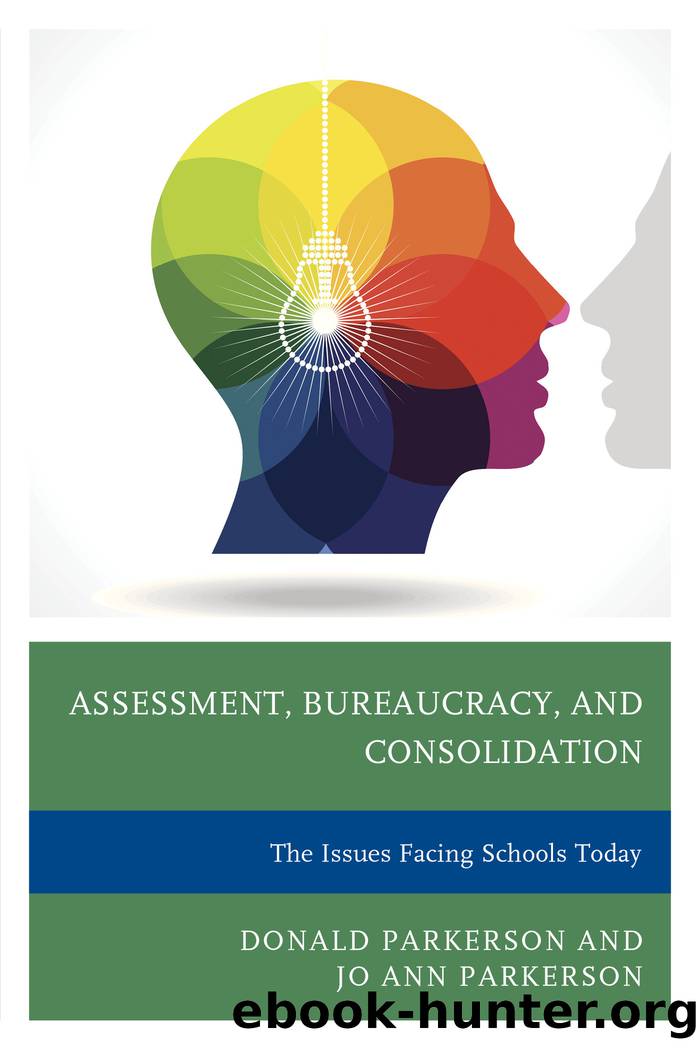Assessment, Bureaucracy, and Consolidation by Parkerson Donald;Parkerson Jo Ann;

Author:Parkerson, Donald;Parkerson, Jo Ann;
Language: eng
Format: epub
Tags: undefined
Publisher: Rowman & Littlefield Publishers
Published: 2012-08-15T00:00:00+00:00
Testing and Immigrant Restriction
Support for immigration restriction had been growing for nearly two decades in the United States. In that environment, Henry H. Goddard, then director of the Vineland Training School in New Jersey, had been given permission by the US government in 1913 to conduct an experiment using 165 immigrants on Ellis Island who had been classified as feebleminded. The purpose of the study was to determine whether it was âfeasible to test with considerable degree of accuracy the mentality of the immigrant.â Goddard concluded that it was indeed feasible but not an easy task (Goddard 1917, 271).
This work had a dramatic impact on the passage of the Immigration Act of 1917, the first national law that broadly restricted immigration. In addition to the exclusion of immigrants from South Central Asia, it also banned the immigration of âidiots,â the feebleminded, as well as those classified as mentally or physically defective. Moreover, all immigrants over the age of sixteen years were required to pass a âliteracy testâ that determined whether they could read thirty to forty words in their native language (Goddard 1917).
Clearly, the work done by Goddard in 1913 at Ellis Island, as well as the enormous body of eugenics literature that had been published in the previous decade, had a direct effect on public policy in the United States, especially in the area of immigration restriction (Goddard 1917).
Four years later, in 1921, Robert Yerkes summarized the results of the Alpha and Beta tests in an edited volume for the National Academy of Sciences. In a large 891-page report, he reviewed in detail the average scores of various groups on these tests. He reported that Southeastern Europeans and African Americans had scored the lowest among all the groups tested. And while Yerkes called for some caution in the interpretation of these results, many policy makers used these finding as scientific evidence of the inherent inferiority of these groups (Yerkes 1921).
Carl Brigham, one of an army of psychologists who were associated with Yerkes and the administration of the Alpha test, went even further. In his 1923 A Study of American Intelligence, based loosely on the results of the Alpha tests, he argued for the superiority of the âNordic Raceâ (Brigham 1923).
This sort of reasoning fueled the general feelings of racial superiority among some whites and also reinforced vague ideas about the possible eugenic consequences of our current immigration policies. Immigration-
restriction zealots, such as Representative Harry Laughlin, eagerly embraced the work of Yerkes and especially Brigham to make a case for the National Origins Act of 1924. This new law expanded earlier immigration restrictions and established quotas for immigration that were biased in favor of Northern and Western Europeans but restricted the immigration of Southeastern Europeans and Jews (Gould 1991, 233).
The legacy of this restrictive immigration legislation would haunt the United States until immigration reform legislation over forty years later in 1965. As Stephen J. Gould has noted in his Mismeasure of Man, âThe quotas . . . slowed immigration from southern and eastern Europe to a trickle.
Download
This site does not store any files on its server. We only index and link to content provided by other sites. Please contact the content providers to delete copyright contents if any and email us, we'll remove relevant links or contents immediately.
The Art of Coaching Workbook by Elena Aguilar(50168)
Trainspotting by Irvine Welsh(21078)
Twilight of the Idols With the Antichrist and Ecce Homo by Friedrich Nietzsche(18324)
Fangirl by Rainbow Rowell(8819)
Periodization Training for Sports by Tudor Bompa(7946)
Change Your Questions, Change Your Life by Marilee Adams(7405)
This Is How You Lose Her by Junot Diaz(6476)
Asking the Right Questions: A Guide to Critical Thinking by M. Neil Browne & Stuart M. Keeley(5387)
Grit by Angela Duckworth(5322)
Red Sparrow by Jason Matthews(5225)
Paper Towns by Green John(4826)
Room 212 by Kate Stewart(4767)
Ken Follett - World without end by Ken Follett(4467)
The Sports Rules Book by Human Kinetics(4097)
Housekeeping by Marilynne Robinson(4084)
Double Down (Diary of a Wimpy Kid Book 11) by Jeff Kinney(3958)
Papillon (English) by Henri Charrière(3942)
The Motorcycle Diaries by Ernesto Che Guevara(3804)
Exercise Technique Manual for Resistance Training by National Strength & Conditioning Association(3798)
